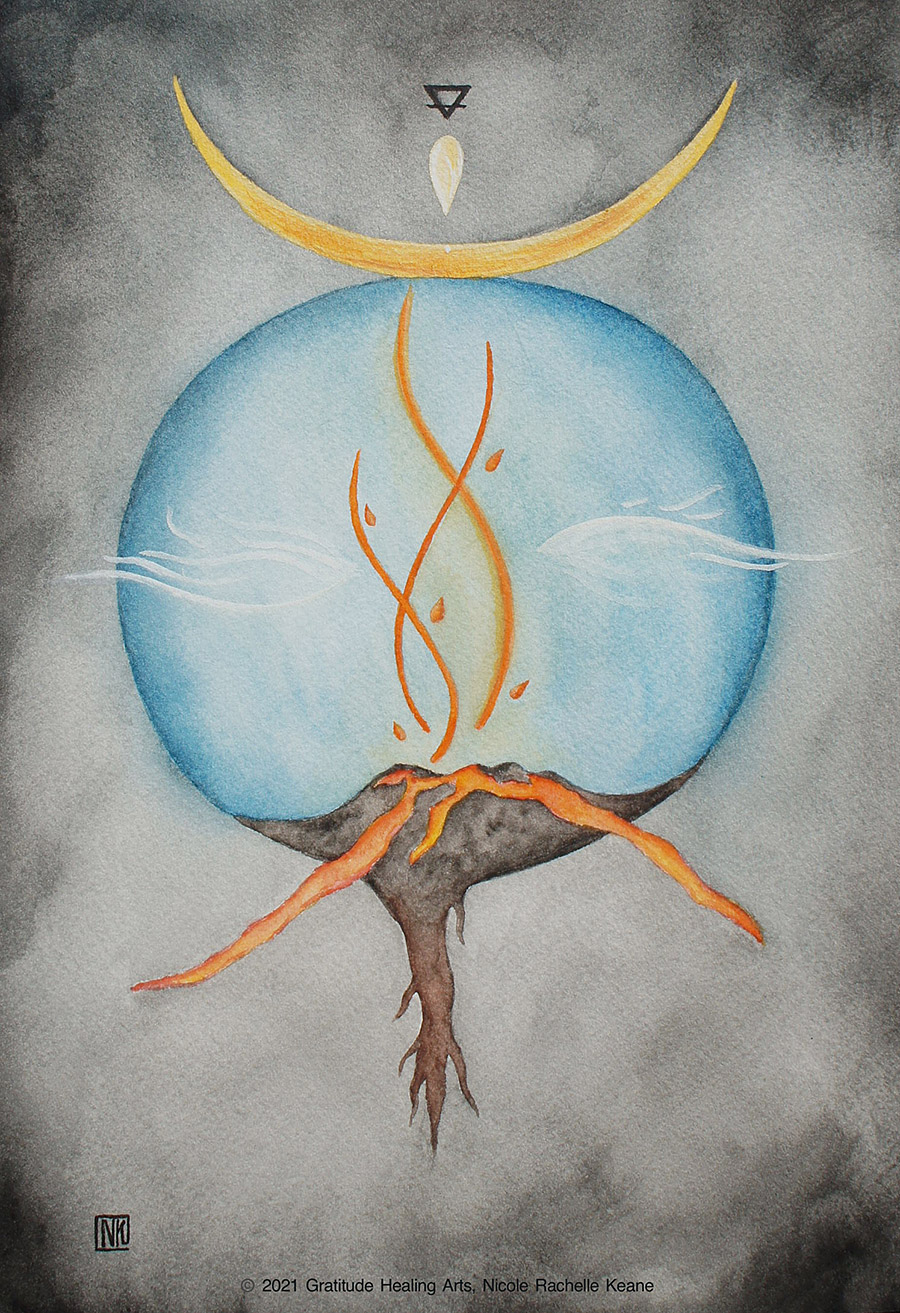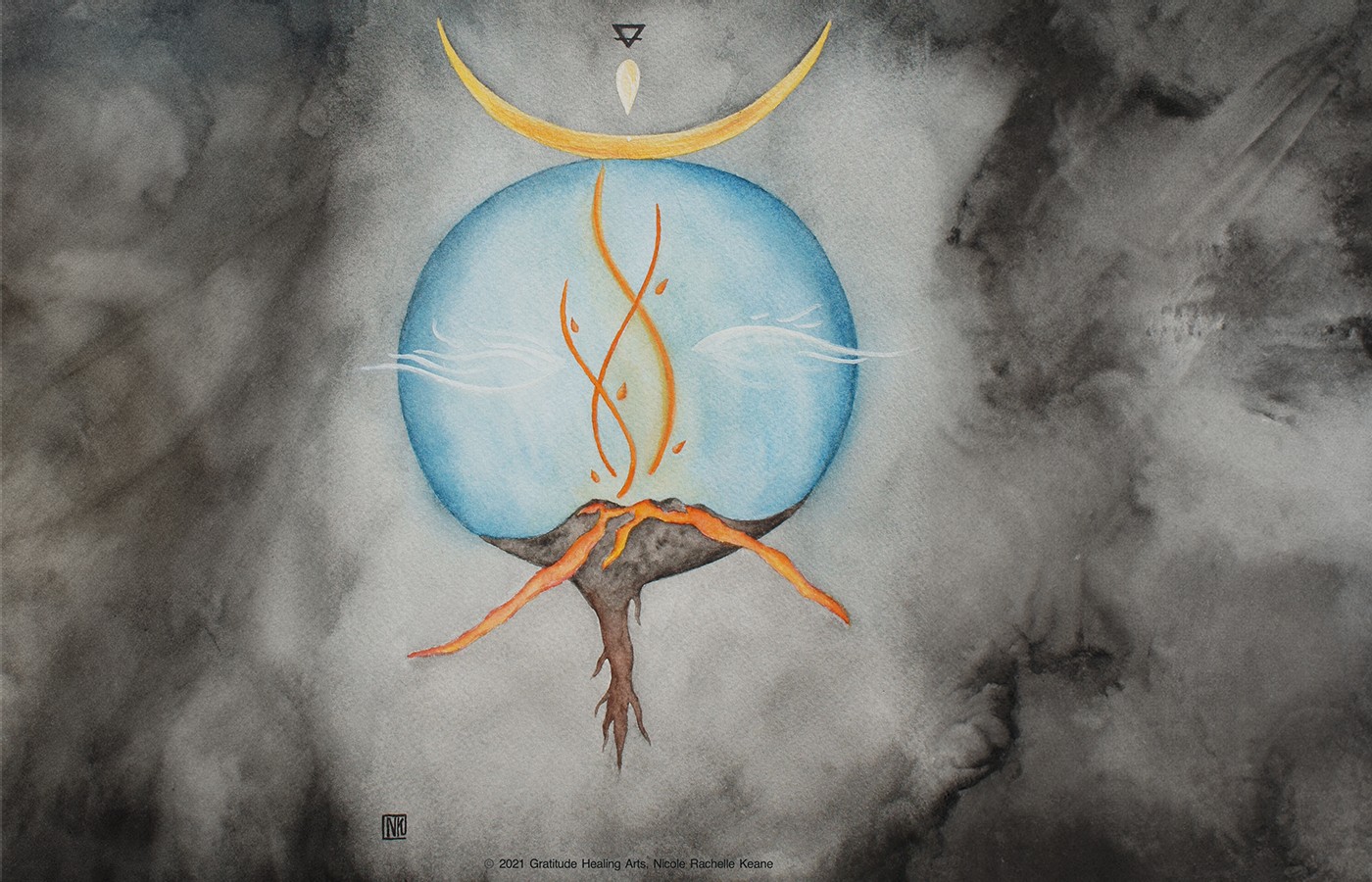Over my almost 30 years in clinical practice, I have used Chai Hu Long Gu Mu Li Tang extensively for a wide array of clinical presentations ranging from chronic headaches to anxiety, insomnia, and prescription drug withdrawal symptoms if these situations fit the appropriate patterns – all with extremely positive clinical outcomes.
On Addiction and Codependency (Pt. 2)
Editor’s Note: Read part 1 of this article (July issue) for Nicole’s introduction to this topic. Pt. 2 describes the flow of treatment during the first session with this client.
I did an initial Toyohari energy assessment at the vertex of the cranium (VTA) that lead me to the right cerebellum, specifically the default mode zone. I treated this with an emotional release reiki technique. Usually, an energetic holding here indicates an emotional pattern of internalizing feelings. VTA led to the point GB 10, which I used an acupressure release for accessing an area of the thalamus that deals with codependency behavior and addictive/habitual patterning.2
The VTA then lead me to the posterior coronal ligament of the liver, which was restricted at the diaphragm. I released this with a viscoelastic compression of liver parenchyma, mobilized the liver, then made a reiki connection with the visceral peritoneum. This specific ligamentous area is often a seat of latent aggression, stuck within a broken-down process of grieving.1
I then used posterior and anterior compression with reiki to mobilize the liver in a full spectrum of motion. I followed this mobilization with an energetic balancing of the liver in its natural pattern of motion, the pattern of an analemma.2 While balancing the liver in such a way, I was observing any residual restriction within the attachment of the posterior coronal ligament to the diaphragm; there seemed to be much less, but possibly there was still some tension left in the area.
The next VTA led me to a myofascial release of the right jugular foramen, with a connection specifically to the fibers of the dorsal vagus, near the nexus of the triple warmer and gallbladder divergent channel, which I treated with gentle acupressure.2 An audible gurgling was heard, as a release followed within the area of the nodos ganglion, hepatic hilum, and biliary ducts, also a nexus area between the triple warmer and gallbladder divergent channel.1
The client mentioned that they felt, in this moment, a release, and noted a prolific ”opening” in the area under the rib cage. They mentioned that they felt much more at ease.
Next, I did a cranial dural release, with activation of the sensory trigeminal nerve through the coronal suture, followed by a release of the spinal sensory trigeminal nerve (SSTN) nucleus in the medulla. The VTA then guided me to mobilize and release the accessory nerve at GB 21. Patiently, I followed the rhythm of the peripheral nervous system to get this release, staying with the nerve while it twisted and unwound.1
The VTA then referred me to the spleen, where I assessed, with gentle reiki, to gather that the shen of the heart had nested very near to the spleen, and were presenting in my mind’s eye as a cluster of baby birds crying out to be nourished, left quite abandoned, mouths open wide, reaching, waiting for a proper mother to come back to attend to them.1

The spirit affiliation that oversees this area, the shen of the earth element, will often create a safe space for the proper shen, that normally reside within the heart, to nest in, while the heart is inhabited by the energy of others, or if the shen have been frightened away by some kind of emotional trauma.1
This may happen when someone takes on the energy of another through transference, codependency, or any abusive conditions. In instances such as this, the spirit yi that normally reside within the spleen, need to nourish and cultivate the “consciousness of potentials” within the spirit soul, with the supportive and reflective assistance of the metal/air element, and the holographic spirit affiliation of the yi.1
Most of the time, this process needs to be done in a very conscious and deliberate way, as there is so much going on in the subconscious with regard to processing, or dissociating from the experience of the trauma.
This may happen through a process of grieving the future that has been lost, integrating the reality that is, and preparing for the future that will be. The yi offer assistance and support in planning and directing the soul’s energy toward self-actualization, and the resolution of a sense of purpose and connection with the divine will and source energy.
The process of radical acceptance, and the breath work and imagery associated with the practice of Tonglen, can be integral to the success of this process.1
After observing and acknowledging the presence of these pre-fledging spirit shen, I then performed a viscoelastic compression of the spleen, followed by a release of the tension within the lesser momentum, a tissue within the triple warmer complex, along the lesser curvature of the stomach, that is linked to the connection with the higher self.1 Tension here can cause great disturbance in the dorsal vagus, nodos ganglion, and impede the ability of the autonomic nervous system (ANS) to properly regulate digestion.1
This was then followed by a stomach mobilization, and a release of the splenic flexure of the large intestine, through the flow of energy described within the Tan Cycle and Yu Angles treatment theories.1
The next VTA led me back to the cranial dura, at the location of BL 3. I used acupressure reiki to release this area, followed by a cranial dural release to activate the sensory trigeminal nerve. The VTA then referred to the dentate gurus of the hippocampus, and the amygdala. I used points on the gallbladder channel to connect these areas with reiki, releasing restriction and activating energy flow, to enhance neuroplasticity, and support the ability to reprogram the personal experience away from that of trauma and abandonment, and toward that of self-support and encouragement.
The VTA then directed me to an acupressure release of the nucleus ambiguous of the medulla, and a release of the spinal dura in the upper cervical spine.2
As the treatment was wrapping up, the VTA directed me toward the pineal gland, which I accessed from the governing vessel at point 24, just within the hairline, to settle wind and activate a connection with divine source energy and the higher self. The inferior pituitary was then accessed from a position just below Suspended Tuft, GB 6. 2
The treatment was finalized with a balancing of the cerebellum, and a connection with the insula, and activation of the claustrum, for deep integration potentials.2
A few days after the treatment, this client reached out to me and asked for my notes from the session. I gave them my notes, and asked how they were feeling after integration. They reported “a sense of confidence and calm, in you as a practitioner and in myself as a patient, and that my nervous system has been objectively observed. And I know that my nervous system has been dysregulated, on fire frankly, in my own way, but in integrating the treatment I felt more spacious, and more of a connection to my personal power, like now I have the power to open my heart… and that I am taking the right steps on my healing path, and that this work will bring me freedom … and an open heart.”
This work is so beautiful, profound and transformative. To the nervous system that is willing and on the path, it can feel so safe to feel held, and seen on a very physical and energetic level, with such support and assistance from the release of the physical restrictions in the body, so the energy may once again process and flow. So, one may find an equilibrium and make their way to equanimity.1 It’s such a privilege to share in the body’s stories and be able to be a translator from energy into form.
References
- Keane NR. The Tao of the Polyvagal Theory: A Five Element Perspective for a Future of Healing the Spirit and Balancing the Autonomic Nervous System. Gratitude Healing Arts, LLC; 2021.
- Keane NR. Elemental Manual Meridian Theory and Techniques (EMMT); Wood, Fire, Earth Element Courses. Elemental Advanced, LLC; 2022.



